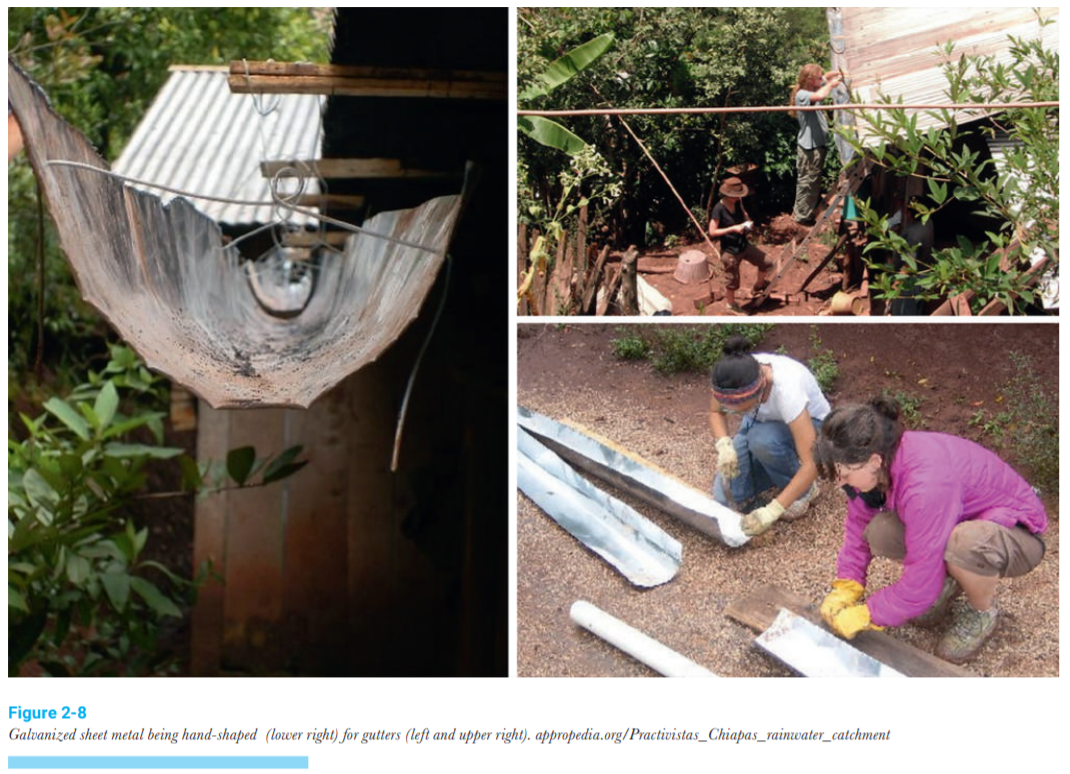2.2: Conveyance (Gutters and Downspouts)
- Page ID
- 11924
Conveyance is what brings the water caught on the catchment area to where it will be stored and used. Gutters, downspouts, and piping serve to convey water from the catchment area to storage and end-use. Typical conveyance materials include the following:
- Bamboo (Figure 2-7).
- Pros: Very inexpensive and easy to grow in many climates.
- Cons: Difficult to create gutters (somewhat easier for conveyance). Lower durability.
- Hand shaped galvanized sheet metal (Figure 2-8).
- Pros: Very accessible.
- Cons: Hard to make joints for long lengths.
- Straight PVC (Figure 2-9).
- Pros: Accessible and easy to work with.
- Cons: Components can be expensive. Sizing must be more accurate.
- PVC cut in half (Figure 2-10).
- Pros: Accessible and easy to add slope.
- Cons: Hard to mount.
- PVC sliced and capped onto the corrugated metal roof (Figure 2-11).
- Pros: Accessible and easy to mount.
- Cons: Hard to make the necessary slope.
- Conventional “K” style aluminum, steel, zinc, vinyl, or copper. Typically, 5” or 6” (Figure 2-12).
- Pros: Easy to mount and find fittings.
- Cons: More expensive.





Gutters and conveyance need to be sloped in the direction of water flow to prevent clogging, sagging, mosquitos, and damage from freezing. Rainwater harvesting systems should use an approximate slope of ½ inch of drop for every 10 feet. One way to use less slope is to increase the size of the conveyance. Three common reasons to use less slope are aesthetic (so the end of the gutter is not too low), ease of mounting, and to keep water from a steep roof from overshooting the gutter.


